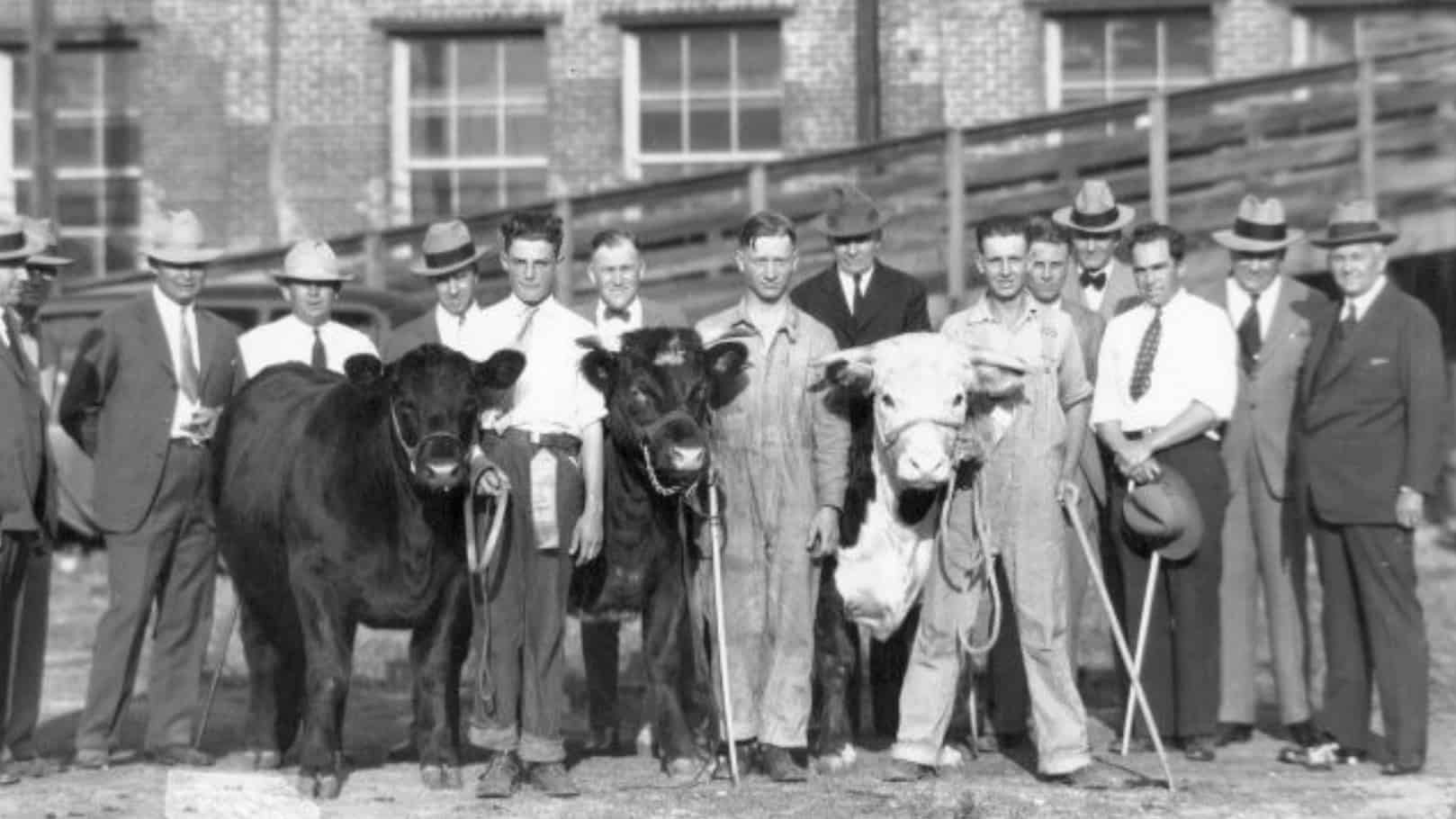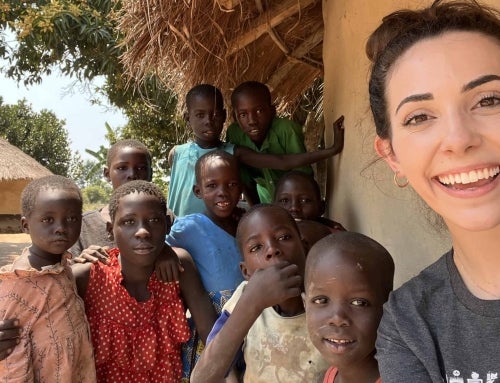In 1928, our organization’s founders — a group of young leaders — came together with a vision and purpose: to unify students, teachers and members of the farming community in support of agricultural education. To achieve this, they formed a group called the Future Farmers of America. We have evolved in the 95 years since (for one, we updated our name to the National FFA Organization in 1988 to better represent the diverse interests and opportunities of our membership), but our goal has remained the same: to prepare future generations for their paths in agriculture and beyond. In doing this, we hold fast to the traditions we’ve developed and celebrated in our near century of existence and to the many ways FFA members develop a sense of belonging to something very personal, yet much larger than themselves.
“Our traditions are meant to be passed on to future generations and communicate the values expressed within our FFA ceremonies, Creed and motto,” says Dr. Larry Case, former national advisor, chief administrator and chairman of the National FFA Organization Board of Directors. “These are ultimately part of what makes our country strong and productive.”
As we celebrate a few noteworthy anniversaries within FFA this year, let’s also reflect on their history and recognize what has made, and always will make, this organization special.
90 Years of the FFA Jacket
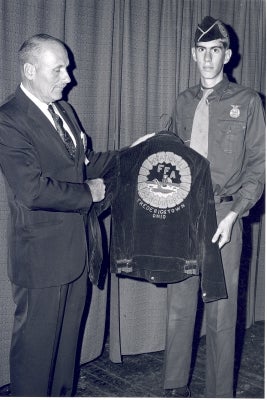 Over the years, the iconic and memorable FFA jacket has shaped countless members’ agricultural experiences. However, the jacket many know and love has humble beginnings tracing back to Fredericktown, Ohio.
Over the years, the iconic and memorable FFA jacket has shaped countless members’ agricultural experiences. However, the jacket many know and love has humble beginnings tracing back to Fredericktown, Ohio.
In 1933, FFA advisor Gus Linter found a blue corduroy jacket hanging inside a local hardware store. Linter purchased the jacket, then connected with a supplier and had his chapter’s name — Fredericktown FFA — stitched on the back in gold lettering.
During national convention the same year, Linter’s chapter debuted the jackets. The design was so popular, it inspired delegates to vote and later approve the jackets as part of FFA members’ official attire. As time progressed, three versions of the jacket were developed. Each version included slight, yet noticeable changes. According to Dr. Gary Moore, professor emeritus of agricultural and human sciences at North Carolina State University, a few other youth organizations have emulated the FFA jacket, including the Vocational Industrial Clubs of America and the Future Homemakers of America members’ red jackets as well as the 4-H green corduroy jackets.
There’s no telling how many FFA jackets are hanging in closets across the country, and former members revere their association with FFA,” Moore says. “This is something we can be proud of. The jacket is an enduring icon and a silent testimony of the values associated with agricultural education and FFA.”
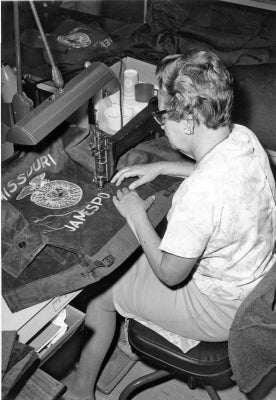 In the early days, each jacket was hand-embroidered, says Lisa Barger, National FFA director of merchandise and membership services. The process of producing a jacket, which now takes an average of 1.6 yards of corduroy to create, has since become more mechanized.
In the early days, each jacket was hand-embroidered, says Lisa Barger, National FFA director of merchandise and membership services. The process of producing a jacket, which now takes an average of 1.6 yards of corduroy to create, has since become more mechanized.
“For many members, wearing the FFA jacket helps them feel like they are part of something bigger than themselves,” Barger says. “They feel like part of their chapter and community as well as learn to appreciate the long-standing legacy behind FFA.”
In 1964, the one-millionth FFA jacket was sold. Currently, more than 90,000 jackets are sold annually, Barger says. Through the Give the Gift of Blue program, FFA donors and supporters have also provided more than 16,000 jackets to members in need nationwide.
“The jacket holds so much history and tradition, but it’s also the key to many members’ futures,” Barger adds. “Although it may seem like just an article of clothing to some, putting it on for the first time — and the experiences and accomplishments achieved while in it — can truly change lives.”
Golden Anniversary of Official Dress
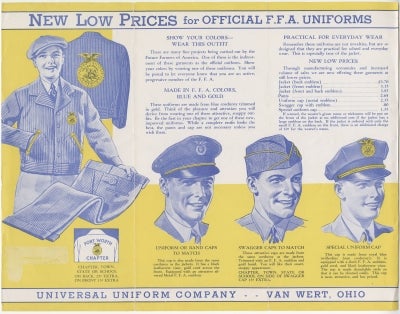
National FFA marketed the first corduroy jackets with nifty brochures.
The first version of FFA Official Dress standards was created in 1973. Half a century later, these standards continue to instill a sense of unity as well as provide a recognizable image for FFA.
Before finalizing these standards, FFA experimented with a few different looks, according to Denise Rayman, digital archivist at Indiana University-Purdue University Indianapolis. These included an introduction of the first FFA uniform, which consisted of a military-style shirt, pants and hat.
Distinct jackets were also made for New Farmers of America members.
Before women were able to become FFA members in 1969, one way they could become involved was by being chosen as Chapter Sweetheart. After being selected by members, these females often represented an FFA chapter at events and other functions, Moore says, and wore rayon or corduroy custom white or sky-blue jackets.
Additionally, casual items, including official FFA-branded caps, jewelry, sports uniforms and other accessories, were developed and distributed over the years. A list of these, among others, with supplemental photographs can be accessed within the FFA Fashion Show online exhibit compiled by Rayman.
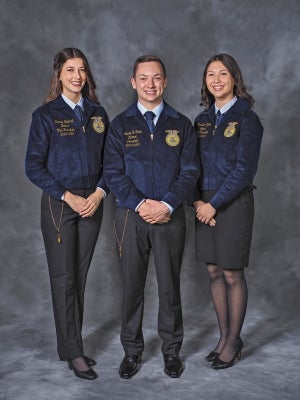
As time progressed and the scope of FFA expanded, additional changes to Official Dress standards were made. For example, in 1988, the wording within the emblem evolved from “Vocational Agriculture” to “Agricultural Education.” The jackets also underwent a restoration process from 2003 to 2005 that established a new standard of blue, restored the design and color of the emblem, improved fit and comfort as well as increased overall durability.
In 2016, FFA delegates voted to make FFA Official Dress standards more inclusive. Members can now wear skirts or pants, as well as religious attire, while representing the organization. A full list of current FFA Official Dress guidelines is outlined within the National FFA Official Manual at FFA.org/Official-Manual.
“To me, the FFA uniform reminds us of where we have been, who has worn the jacket prior to us and how members today get to carry on the legacy of those before them,” says Bre Holbert, former National FFA Organization president and current agriculture educator for the Sacramento-Florin FFA Chapter. “It also becomes a banner of excellence and personal brand members can continue to cultivate with the actions they perform while wearing it.”
Shop FFA, the organization’s official supply service, continues to outfit members nationwide. Visit ShopFFA.org to view and purchase current merchandise, including jackets, FFA Official Dress and more.
Past Meets Future
Although honoring the past is important, those in FFA also acknowledge the importance of looking to the future. In shaping the leaders of tomorrow, we aim to instill a hopeful future for all kinds of agriculturists who will wear the blue jacket — and FFA Official Dress — in the years to come.
“FFA members deserve a space where all can feel welcome and brought into FFA traditions,” Holbert says. “These allow old and young to connect, but the newness of programming and resources for our local and state associations needs to continue to grow and change with our membership. All stakeholders, advisors, alumni, corporate sponsors and members should be supportive of this in order for our organization to sustain itself for another 100 years.”
To learn more about FFA history and access a full timeline of events, visit FFA.org/FFA-History.
Momentous Membership
This year, we also take time to remember and honor those who helped shape the diverse membership now found within FFA. Join us in celebrating the following groundbreaking members.
- Fifty years ago, Texan Fred McClure was elected as the 1973-74 National FFA secretary. McClure was the first Black national officer.
- Twenty-five years ago, Jose Santiago was elected as the first national officer from Puerto Rico. Santiago served as the 1998-99 National FFA southern region vice president.
- Twenty years ago, Javier Moreno was elected as the 2003-04 National FFA president. Moreno was the first Puerto Rican and person with a native language other than English to be elected as a national FFA president.

